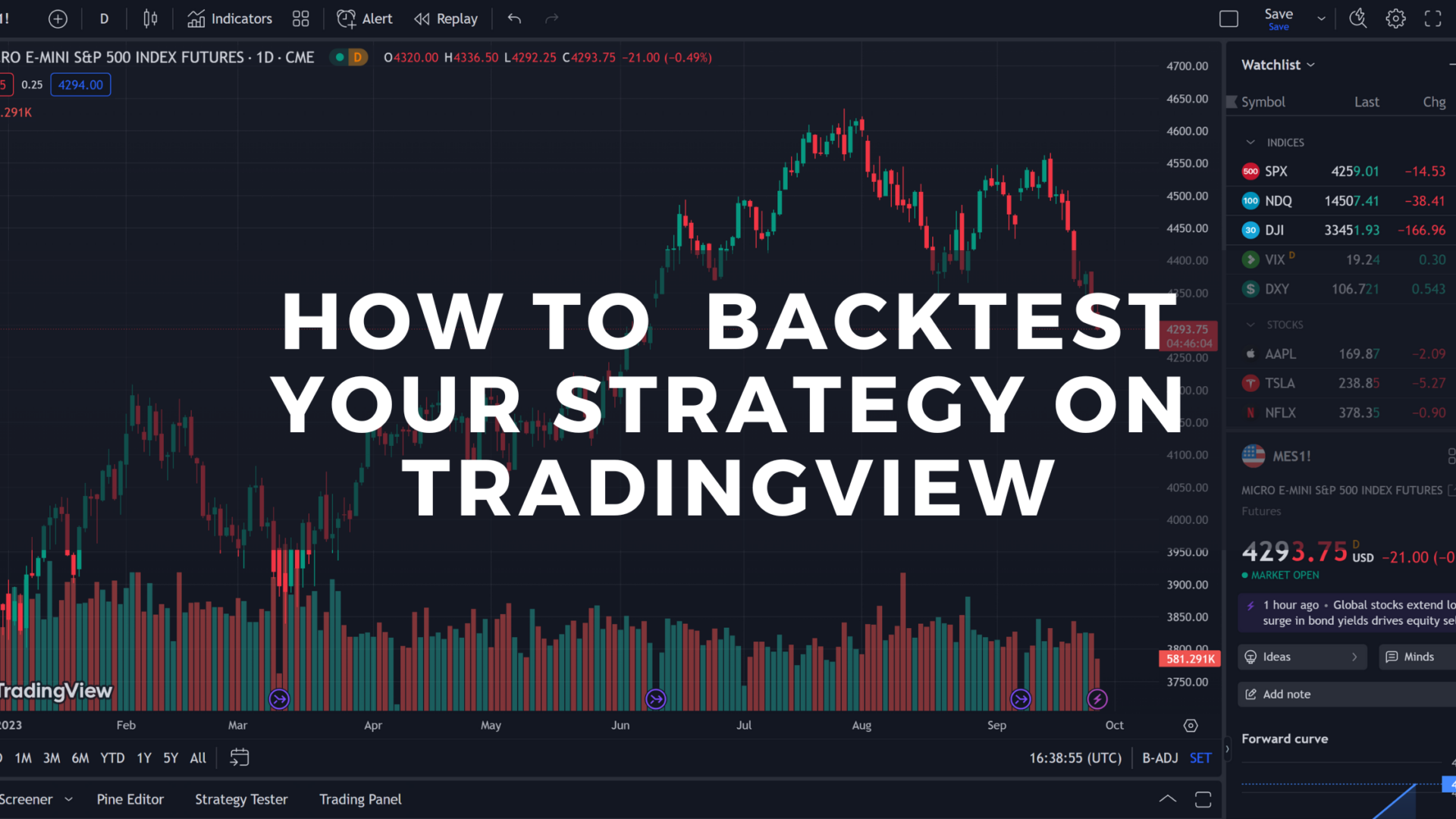Did you know that day traders can make more trades in a single day than some people make in a lifetime? Choosing the right day trading software is crucial for maximizing your trading potential. In this article, we’ll explore the essential features to look for, including the importance of real-time data, user-friendly interfaces, and advanced charting tools. We’ll also discuss how backtesting can refine your strategy, the significance of broker integration, and the necessity of mobile accessibility. Key topics such as risk management tools, order execution speed, and alert systems will be covered, along with the value of customer support and social trading features. Additionally, we'll highlight the importance of security measures, customizable dashboards, educational resources, and how pricing affects your software choice. Let's dive into the must-have elements that can enhance your day trading experience with DayTradingBusiness!
What are the essential features of day trading software?
Essential features of day trading software include:
1. Real-Time Data: Access to live market data for accurate trading decisions.
2. Advanced Charting Tools: Customizable charts to analyze price movements and trends.
3. Order Execution: Fast and reliable order execution to capitalize on market opportunities.
4. Risk Management Tools: Features like stop-loss and take-profit orders to manage risk effectively.
5. Technical Analysis Indicators: A variety of indicators such as moving averages, RSI, and MACD for informed trading.
6. News Integration: Access to financial news and updates to stay informed about market influences.
7. User-Friendly Interface: An intuitive layout for easy navigation and quick access to essential tools.
8. Backtesting Capabilities: Ability to test trading strategies using historical data.
9. Mobile Access: Compatibility with mobile devices for trading on the go.
10. Customer Support: Reliable support for troubleshooting and inquiries.
These features can significantly enhance your day trading experience.
How does real-time data impact day trading software effectiveness?
Real-time data enhances day trading software effectiveness by providing up-to-the-second market information, enabling traders to make timely decisions. Features like live price updates, instant order execution, and real-time alerts help capture profitable opportunities and minimize losses. Access to current news feeds and market sentiment analysis also sharpens trading strategies. Ultimately, real-time data is crucial for maximizing accuracy and responsiveness in day trading software.
Why is user interface design important in day trading platforms?
User interface design is crucial in day trading platforms because it directly impacts usability and decision-making speed. A clean, intuitive layout helps traders quickly access vital information, such as live price feeds and charts, reducing the risk of missed opportunities. Efficient navigation allows for swift execution of trades, which is essential in a fast-paced environment. Customizable dashboards can cater to individual trader preferences, enhancing their experience. Additionally, responsive design ensures that the platform performs well on various devices, making it easier to trade on the go. Overall, effective user interface design can significantly improve trading performance.
What types of charting tools should I look for in trading software?
Look for charting tools that offer real-time data, customizable indicators, and various chart types like candlestick, line, and bar charts. Ensure the software has advanced features like trend lines, Fibonacci retracements, and volume overlays. User-friendly interface and the ability to save and share chart setups are also important. Consider platforms that support multi-timeframe analysis and provide historical data for backtesting strategies.
How can backtesting features enhance my day trading strategy?

Backtesting features can significantly enhance your day trading strategy by allowing you to simulate trades based on historical data. This helps you evaluate the effectiveness of your strategy without risking real money. Look for software that offers:
1. Comprehensive Historical Data: Access to diverse market conditions for accurate testing.
2. Customizable Parameters: Ability to adjust variables like entry and exit points to refine strategies.
3. Performance Metrics: Detailed reports on win rates, risk-reward ratios, and drawdowns to assess strategy viability.
4. Visual Charting Tools: Graphical representations of trades to better understand patterns and outcomes.
5. Multi-Asset Testing: Capability to test strategies across different asset classes for broader insights.
Using these features can help you identify strengths and weaknesses in your trading approach, leading to more informed decisions in live trading.
What role does broker integration play in day trading software?
Broker integration in day trading software allows seamless execution of trades, real-time data access, and efficient portfolio management. It enables users to connect directly with their brokerage accounts, facilitating quick order placements and real-time monitoring of market conditions. Look for software that offers robust broker integration to enhance trading efficiency, reduce latency, and provide comprehensive analytics for informed decision-making.
How important is mobile accessibility for day trading applications?
Mobile accessibility is crucial for day trading applications. It allows traders to monitor markets and execute trades in real-time, regardless of location. Fast response times and user-friendly interfaces enhance decision-making on the go. Look for features like real-time alerts, seamless integration with desktop platforms, and robust security to ensure safe transactions. Without mobile accessibility, traders risk missing critical opportunities.
What risk management tools should day traders consider?
Day traders should consider the following risk management tools in their trading software:
1. Stop-Loss Orders: Automatically close positions at predetermined loss levels to limit potential losses.
2. Take-Profit Orders: Set targets to lock in profits when a trade reaches a certain price.
3. Position Sizing Calculators: Help determine the appropriate amount of capital to risk on each trade.
4. Risk/Reward Ratio Analysis: Evaluate potential profit against potential loss before entering a trade.
5. Volatility Indicators: Tools like the Average True Range (ATR) to assess market volatility and adjust strategies accordingly.
6. Trailing Stops: Move the stop-loss order as the price moves in favor of the trade to protect gains.
7. Margin Alerts: Notify traders when margin levels are approaching limits to manage leverage risk.
8. Portfolio Risk Assessment: Analyze overall exposure and diversification to avoid concentrated risks.
Using these tools can help day traders manage their risks effectively.
How does order execution speed affect day trading success?

Order execution speed is crucial for day trading success because it directly impacts the ability to enter and exit positions quickly. Faster execution allows traders to capitalize on short-term price movements and reduces the risk of slippage. Delayed execution can lead to missed opportunities or unfavorable prices, which can erode profits. Thus, choosing day trading software with low latency and high-speed order processing is essential for maximizing trading effectiveness.
What are the best alert systems in trading software?
The best alert systems in trading software should include customizable price alerts, volume alerts, and news alerts. Look for features that allow real-time notifications via SMS, email, or app push notifications. Integration with technical indicators for alerts based on specific patterns or thresholds is essential. Additionally, a good alert system should offer backtesting capabilities to help refine your strategies. Choose software with a user-friendly interface for easy setup and management of alerts.
Why should I prioritize customer support when choosing trading software?
Prioritize customer support when choosing trading software because effective support ensures quick resolution of issues, minimizing downtime during trades. Access to knowledgeable representatives can help you navigate complex features, enhancing your trading experience. Good customer support also indicates the company’s commitment to user satisfaction, which can be crucial in a fast-paced trading environment. Look for 24/7 availability, multiple contact options, and positive user reviews about support responsiveness.
How can social trading features benefit day traders?
Social trading features benefit day traders by providing real-time insights from experienced traders, allowing them to follow and replicate successful strategies. These features foster community engagement, enabling traders to share tips and market analysis. Access to performance metrics and trade histories of top traders can enhance decision-making and reduce the learning curve. Additionally, social trading platforms often include discussion forums for instant feedback and support, helping day traders stay informed about market trends and sentiment.
Learn about How Does Insider Trading Affect Day Traders?
What security measures should be in place for trading software?
For trading software, essential security measures include:
1. Data Encryption: Ensure all data is encrypted during transmission and storage.
2. Two-Factor Authentication (2FA): Implement 2FA to add an extra layer of security for user accounts.
3. Regular Software Updates: Keep the software updated to protect against vulnerabilities.
4. Secure Access Controls: Limit access based on user roles to minimize risk.
5. Firewall Protection: Use firewalls to prevent unauthorized access to the system.
6. Session Timeouts: Automatically log users out after periods of inactivity to reduce exposure.
7. Activity Monitoring: Monitor user activity and transactions for suspicious behavior.
8. Backup Solutions: Regularly back up data to prevent loss in case of a cyber incident.
These features help protect sensitive trading information and ensure a secure trading environment.
How do customizable dashboards improve trading efficiency?
Customizable dashboards improve trading efficiency by allowing traders to tailor their workspace to their specific needs. Traders can prioritize key metrics, set up real-time alerts, and organize charts and data that matter most to their strategies. This personalization reduces the time spent navigating irrelevant information, enabling quicker decision-making. Furthermore, a well-structured dashboard can help identify trends and opportunities faster, leading to more informed trades. Overall, customizable dashboards streamline the trading process, enhancing overall performance.
What educational resources should be included in day trading software?
Day trading software should include educational resources such as tutorials, video lessons, and live webinars. Look for integrated market analysis tools, risk management guides, and real-time trading simulations. Access to a community forum or chat feature for peer support can enhance learning. Additionally, ensure there are detailed articles or eBooks on trading strategies and technical analysis. Having a glossary of trading terms is also beneficial.
Learn about Day Trading Brokers with Educational Resources
How does pricing impact the choice of day trading platforms?

Pricing significantly influences the choice of day trading platforms by determining value for features, costs of trades, and overall accessibility. Lower fees can make platforms more attractive, especially for active traders who prioritize cost-effectiveness. Traders often look for platforms that offer competitive commission rates, minimal spreads, and low account maintenance fees. Additionally, the cost can affect the available tools, such as charting software, real-time data feeds, and educational resources. A well-priced platform with robust features can enhance trading efficiency and profitability.
Learn about How Do Prop Firms Impact Day Trading Profitability?
Conclusion about Features to Look for in Day Trading Software
In summary, selecting the right day trading software is critical for success. Essential features such as real-time data, user-friendly interfaces, robust charting tools, and effective risk management systems should be prioritized. Integrating with brokers, ensuring mobile accessibility, and having strong customer support can greatly enhance your trading experience. Additionally, backtesting capabilities, order execution speed, and security measures are vital for safeguarding your investments. Finally, consider the pricing and availability of educational resources to ensure you have the tools necessary for informed decision-making. For comprehensive guidance and insights on these features, look to DayTradingBusiness to elevate your trading strategy.
Learn about Features to Look for in a Day Trading Broker